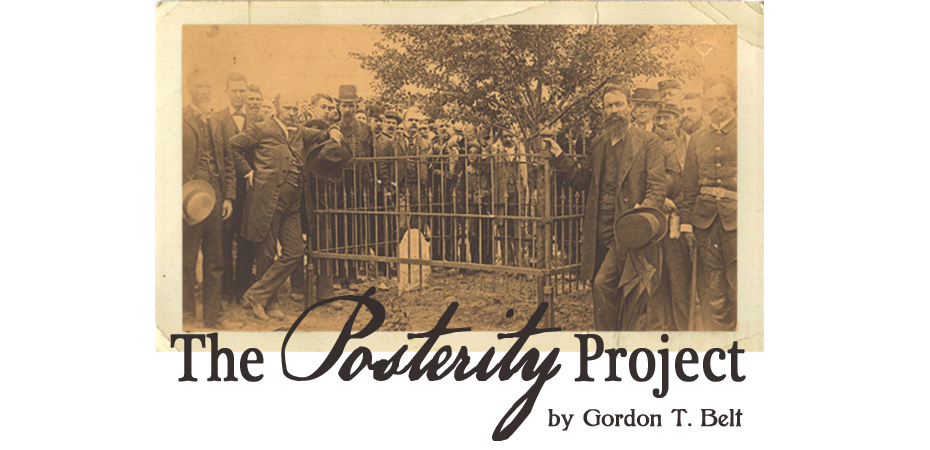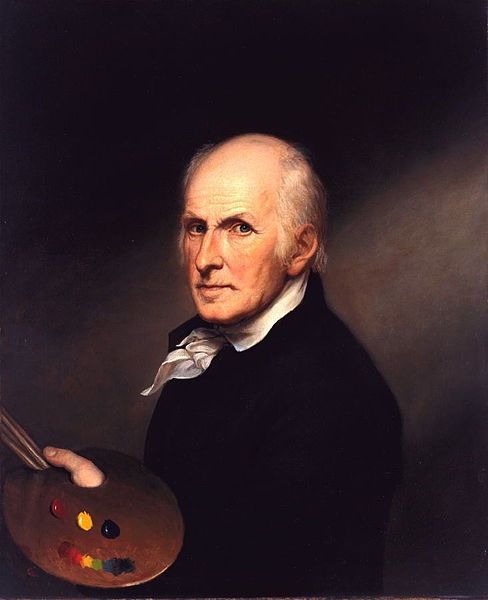But this lasting tribute to Tennessee's founding father was not the first stone marking John Sevier's place in history. Nearly 240 miles away in a cotton field in Alabama, a more humble reminder John Sevier's legacy stood for more than seven decades after his death.
On September 24, 1815, John Sevier died after a sudden illness in the wilderness of Alabama while part of a congressional delegation to establish a boundary with the Creek Nation. The legend told of that day was repeated in the pages of the The Daily Picayune newspaper of New Orleans, on March 29, 1889:
"There is a pretty story still told around the firesides in this country of how Governor Sevier came to his death. He was attending a feast of the Indians know as the 'Green Corn Dance,' and although nearly 72 years of age, was there participating in the festivities of the evening. The next day, while on his return to Fort Decatur, he was taken suddenly sick, and while being carried across the Tallapoosa river, and feeling that he was dying, he said to his attendants that if they would carry him to a big spring about a mile away and let him get a drink of the water he thought he would get well. But he died while crossing the river, and his body was buried on top of the hill overlooking the big spring to which he had referred, and whose waters still sing a constant requiem near his grave."
A small white marble headstone, two feet wide by two inches thick, was all that marked the last resting place of the first governor of Tennessee. The headstone, standing in an overgrown field of cotton, bore the simple inscription:
“J. Sevier, died September 24th, 1815.”
I've often wondered why John Sevier's body remained in Alabama so long after his death. It seems only natural that his body should be laid to rest in Tennessee, but for 74 years his body remained in this humble grave.
 |
| Original headstones of John Sevier and his wife, Catherine "Bonny Kate" Sevier, embedded within the brick facade of the Old Knox County Courthouse, Knoxville, Tennessee. Author photo. |
Perhaps attitudes about death and dying were at play here. Maybe no one wanted to disturb Sevier's body for fear of divine retribution? Or perhaps, the branches of "Old Hickory" cast a long shadow over John Sevier's grave? John Sevier died a few months following Andrew Jackson's decisive victory in the Battle of New Orleans. After the War of 1812 ended, Andrew Jackson became a war hero and his popularity in the Volunteer State, and nationwide, eclipsed that of his rival John Sevier. Once Jacksonian Democracy took hold of the country, memories of John Sevier seemed all but forgotten.
But many years later, after the Civil War, Americans wanted to heal their broken country by finding honor the heroes of their past. In his book, Mystic Chords of Memory, Michael Kammen notes that in the period between 1870 and 1910 American memory began to take form as a self-conscious phenomenon. There was a desire to honor the memory of those who lost their lives during the Civil War. Photography developed as a new technology used to chronicle significant events in the present so that future generations would remember their past. An intense hunger for tradition led to the construction of memorials and statues honoring the great historical figures of our past. In Tennessee, interest in John Sevier's exploits also began to surface at that same time, and once knowledge of Sevier's grave in Alabama became public, citizens throughout the Volunteer State wanted to give their frontier hero a proper burial.
An editorial published on August 22, 1887 in the St. Louis Daily Globe-Democrat lamented the fact that John Sevier's remains were not properly buried in his home state:
"Now, it is rumored down here that Tennessee has been talking for years of building a monument to the memory of Gov. Sevier. There is a small monument in the Nashville Cemetery erected to his memory years ago; but if there is a man to whom a prouder shaft should be lifted than to any other in Tennessee, it is Sevier. Jackson and Johnson and Bell and others were great men. They did great things in a greater day of the republic; but men like Sevier and Hawkins and Shelby laid the foundation upon which they built; and Sevier, with his chances and resources at hand, did more for Tennessee than any man of his day, or since. Is it not a great shame that the grand State of Tennessee does not know where to find the bones of such a patriot? Is it not a great shame that she has never erected a suitable cenotaph to his memory? If Tennessee will not come and dig up his ashes and do the proper honor to them, let Alabama hunt the spot and mark it with a monument."
Efforts were indeed underway to bring John Sevier's remains back to Tennessee. On March 25, 1889, the Tennessee General Assembly passed a Joint Resolution appropriating $500 for the removal of the mortal remains of John Sevier from his grave in Alabama to the Soldiers' Cemetery at Knoxville:
"BE IT RESOLVED by the General Assembly of the State of Tennessee that a joint Committee of three on the part of the Senate, and three on the part of the House, be appointed, whose duty it shall be to procure the removal of the remains of that illustrious and great man, ex-Governor John Sevier, from Alabama, and cause the same to be interred in the National Cemetery at Knoxville, Tennessee, and that five hundred dollars be appropriated for said purpose, said amount to be included in the General Appropriation Bill, and that said Committee be directed to open a private contribution or subscription list allowing any persons to subscribe such amounts as they see fit to be used by said Committee in the erection of a monument on the Capitol grounds at Nashville to his memory. And that the Governor and Speaker of the Senate and the Speaker of the House shall be members of said Committee, by virtue of their office."
Adopted March 25, 1889
B.J. Lea, Speaker of the Senate.
W.L. Clapp, Speaker of the House of Representatives.
Approved April 1, 1889.
Robert L. Taylor, Governor.
Finally, in June of 1889, John Sevier came home. A grand celebration was organized along the route from Decatur, Alabama to Knoxville, Tennessee where Sevier's remains would travel. Twenty thousand people assembled at the Knoxville Court House to witness the ceremony of re-interment, vividly chronicled in the June 18, 1889 edition of The Knoxville Journal. The Knox County Public Library has a narrative excerpted from that newspaper article, along with an interview and commentary by Knox County historian Steve Cotham. This podcast describes in detail the excavation of the grave, the pageantry of Sevier Day, the gathering of dignitaries, and the pride of Knoxvillians in discharging "a duty incumbent upon her citizens."
 |
| Ceremonies at Knoxville. Knox County Courthouse visible in the center,
as well as the grave site of John Sevier, before the arrival of the
procession. Image courtesy of the Tennessee State Library and Archives |
Alabama's Governor Thomas Seay delivered a speech that day, evoking the memory of Tennessee's frontier past, and the posterity of its most celebrated hero, John Sevier:
"Nearly a century and a half ago. Freedom, presiding at the birth, swore a human being to the cause of human liberty - a more solemn invocation than that which called Hannibal to the destruction of Rome and akin to that which gave Samuel to the lord for seventy long years.
From 1745 to 1815 John Sevier gave his life to the republic, and here on this spot seventy-four years ago he was laid to rest. Imagine the scene. A soldier's funeral! The war whoop of the Indians had hardly died away. By the open grave stood the few surviving soldiers and here and there the stalwart and silent form a friendly savage. The startled hare and the frightened squirrel, perhaps, stared at the strange cortege which brought him to his rest. Silent and kindly nature has kept him since. Seventy-four years of this guardianship has not been broken, for Alabama has adopted for his grave the benediction of Prentiss for that of Lafayette: 'Let no cunning sculpture or monumental marble deface with its mock dignity the patriot's grave, but rather let the unpruned vine, the wild flowers, the free song of the uncaged bird and all that speaks of freedom and peace be gathered about it.'
But now, very justly, but not for Sevier's sake, nor for his fame, but for the sake of the republic, for the education and inspiration of her sons, Alabama surrenders these relics to Tennessee. Take all that is left of him. Convey it gently and kindly to his own dear mountains of Tennessee, and under their protecting shadows, beside the Holston, let your monument lift its proud head, that men may know that loyalty to man's best interest is never unrewarded."
SELECTED SOURCES:
- "Unearthed: the remains of John Sevier," Excerpted from The Knoxville Journal, June 18, 1889 - Knox County Public Library Podcast
- “A Solemn Mission Performed: The Removal of General Sevier’s Remains from Alabama to Tennessee,” The Washington Post, June 18, 1889.
- “General Sevier’s Remains: The Governor of Tennessee on the Way to Knoxville With Them,” The Atlanta Constitution, June 18, 1889.
- “The Memory of Sevier: His remains to be Removed from Alabama to Tennessee,” The Atlanta Constitution, June 17, 1889.
- “The Remains of John Sevier: The Escort Arrives in Chattanooga, The Internment Tomorrow,” The Atlanta Constitution, June 19, 1889.
- "John Sevier: The Remains of Tennessee's First Governor, Removed from the Grave in Alabama, Where They Have Rested for Three-Quarters of a Century, To be Transferred to Knoxville, Tenn.," The Daily Picayune (New Orleans), June 18, 1889.
- "Tennessee's First Governor: The Remains of John Sevier Reinterred at Knoxville with Imposing Ceremonies," The Daily Inter Ocean, June 20, 1889.
- "General John Sevier: Tennessee to Remove the Body of Her First Governor to Her Own Land," The Daily Picayune (New Orleans), March 29, 1889.
- "John Sevier: Record of a Patriot Who Sleeps in an Almost Forgotten Grave," St. Louis Daily Globe-Democrat, August 22, 1887.

Gordon Belt is an information professional, archives advocate, public historian, and author of The History Press book, John Sevier: Tennessee's First Hero, which examines the life of Tennessee's first governor, John Sevier, through the lens of history and memory. On The Posterity Project, Gordon offers reflections on archives, public history, and memory from his home state of Tennessee.



